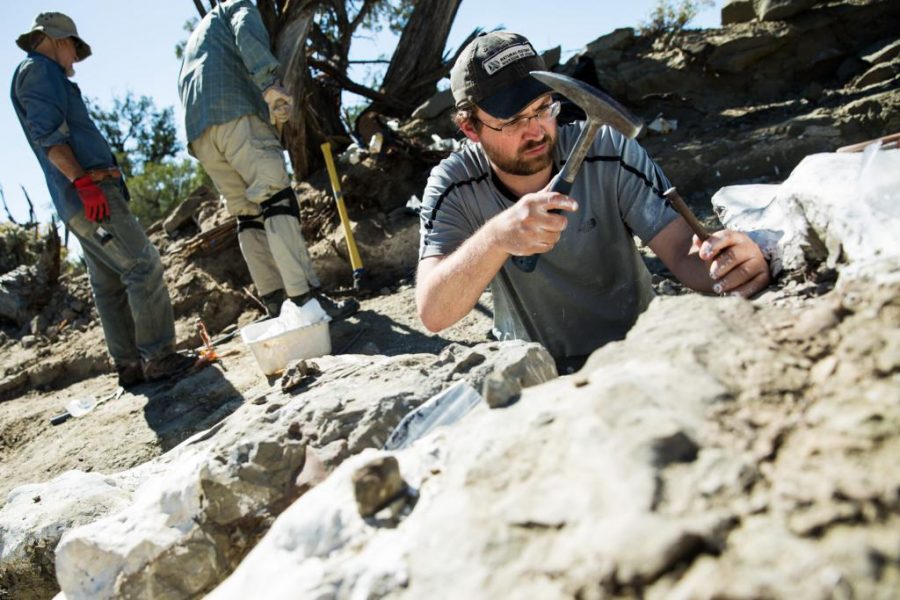Researchers from the University of Utah unveiled a nearly complete Tyrannosaur fossil in Grand Staircase-Escalante National Monument (GSENM) last month, and once the remains — which were airlifted to the Natural History Museum of Utah (NHMU) — are assembled, they will be on display for students and the community to view.
The opportunity for scientists at the U to uncover, prepare and study the fossil is unique. It is likely around 76 million years old and at least 75 percent of its bones are still intact — an unusual occurrence. This fossil is the most complete Tyrannosaur to ever be discovered in the southwestern United States, and researchers can’t wait to launch their examination and find out what they can glean about the ancient species.
“We are eager to get a closer look at this fossil to learn more about the southern Tyrannosaur’s anatomy, biology and evolution,” said Randall Irmis, curator of paleontology at the museum and professor in the Department of Geology and Geophysics, said in a recent U press release.
The fossil is believed to belong to the Teratophoneus Curriei classification, which ferociously rampaged through western North America some 66 to 90 million years ago during the late Cretaceous period. Researchers believe that one of the most exciting parts of the discovery is the nearly complete skull.

GSENM, where the fossil was discovered, has a wide variety of topography and holds rich geological grounds that prove to be a paleontologist’s paradise. Wide expanses of open rock and easily-excavated sediment make it an ideal hunting ground for the remains of dinosaurs, mammals and fish.
Alan Titus, a paleontologist working at GSENM, discovered the fossil in July 2015. He and his colleagues dug it up in part of the central plateau region of the monument — the Kaiparowits Formation. The tyrannosaur was most likely so well preserved because it was swept under a river channel or a flooding event, becoming buried in sediment.
Paleontologists are more knowledgeable about eastern Tyrannosaurs, which are found throughout the Great Plains region, and far less is known about the southwestern cousins of these dinosaurs. Researchers are optimistic that this well-preserved fossil will help open up a world of understanding about these prehistoric creatures.
Excavating a fossil of this size — 17 to 20 feet long — is no simple feat. The paleontologists had a number of volunteers helping them, and the excavation took between 2,000 and 3,000 man hours to complete. The project totaled around five weeks, and another 10,000 hours will likely be needed to complete the examination and assembly at NHMU.
Despite the extensive work ahead of them, researchers are excited to get started. They plan on looking at the size of the fossil, its biology and growth pattern as well as trying to reconstruct muscles to better understand how the Tyrannosaur moved, how it ate and its speed.
Students are also ecstatic about the discovery, and eagerly anticipate the day when the fossil is displayed.
“I’m really excited for the unique opportunity to see this fossil here at the University of Utah,” said Rachel Haggard, a student in kinesiology. “It’s not too often that you get to see a nearly complete Tyrannosaur, and I’m excited to go check it out. I hope this opens a lot more opportunities for the U’s paleontologists to make these kinds of discoveries.”
c.macdonald@dailyutahchronicle.com


